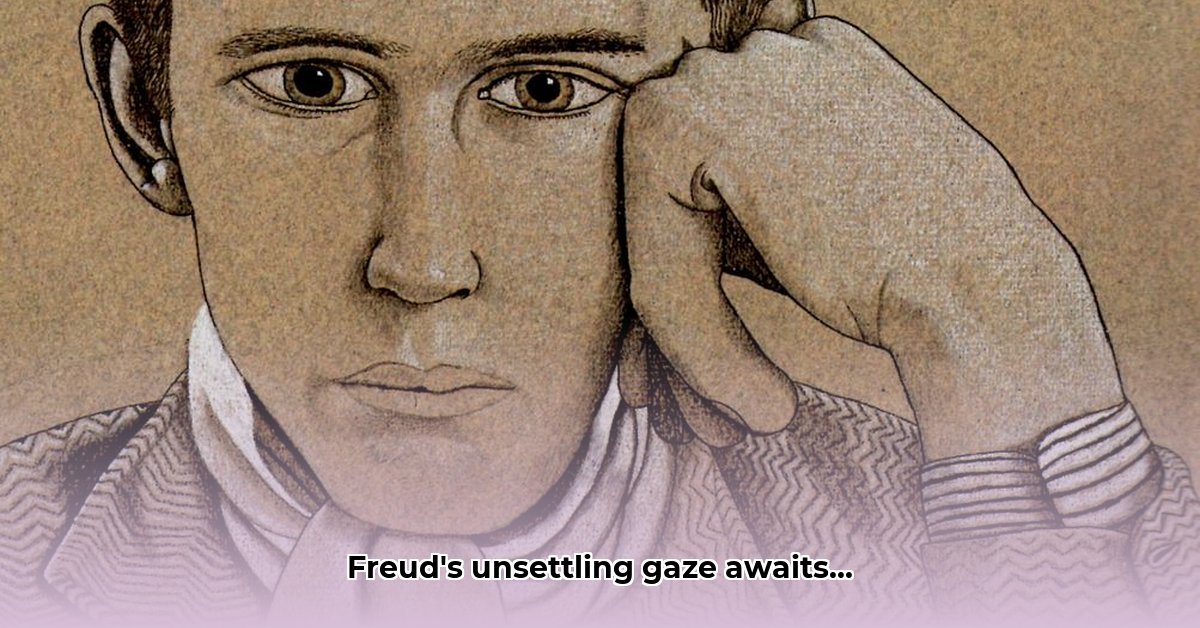
Lucian Freud: A Retrospective of Psychological Intensity
Lucian Freud, grandson of the renowned psychologist Sigmund Freud, wasn't just a painter; he was a chronicler of the human condition, a master of psychological portraiture. His work, characterised by its intense realism and thick, impasto technique, continues to captivate and provoke, pushing the boundaries of figurative art. This retrospective explores his artistic journey, tracing its evolution from early influences to his mature style and examining the psychological depth embedded within his iconic paintings. His legacy, marked by unflinching honesty and a unique artist-sitter dynamic, firmly establishes him as a pivotal figure in 20th-century art. But did his unique style come entirely from artistic talent, or did other factors play a role?
From Royal Roots to Revolutionary Art: Early Influences and Training
Born into a privileged family, young Lucian Freud was exposed to a stimulating intellectual environment. While his grandfather’s psychological theories didn't directly dictate his artistic practice, an undeniable interest in the hidden depths of the human psyche permeates his oeuvre. His formal artistic training provided a robust foundation, but he was far from a conventional artist, readily absorbing diverse influences and forging a distinctive style – a blend of realism and his own distinctive, intensely personal approach. His early works hint at Surrealist and Expressionist leanings, showcasing a keen eye for detail, a fascination with the human form, and a nascent exploration of what he would later master. How did this early foundation shape his later, intensely personal style?
A Brushstroke Story: The Evolution of Freud's Impasto Style
Freud's artistic development is marked by a significant shift from a more polished, precise style towards his signature impasto technique (a painting method where paint is laid on an area of the surface in very thick layers). This transition wasn’t abrupt; rather, it was a gradual evolution, mirroring a deeper engagement with his subjects and a growing fascination with representing the raw, emotional reality of the human experience. The thick, textured paint became an integral part of the work itself, conveying psychological intensity and the weighty presence of his sitters. This physicality of his impasto becomes a visual echo of his psychological exploration of the sitters. How did this shift reflect his evolution as an artist and his changing understanding of his subjects? One could argue it was instrumental in establishing his unique artistic voice.
More Than Skin Deep: Psychological Depth and Thematic Concerns
Freud's portraits transcend mere representation. They are intimate explorations of the human psyche, delving into the vulnerabilities, complexities, and inner lives of his subjects. The intensely personal nature of his work stems from his extended, often intense sittings with his models. These encounters developed beyond mere artistic sessions, forming a powerful dynamic between artist and subject, with the resulting artwork becoming a tangible manifestation of this collaborative interplay. What is the exact nature of this psychological "dance" between artist and sitter? This remains a captivating and complex subject for art historians today. His recurring themes of the human figure, the body, and psychological intensity form a powerful artistic language capable of communicating complex emotions with unsettling accuracy.
The Artist-Sitter Dynamic: A Crucible of Creative Tension
The relationship between Lucian Freud and his sitters was paramount to his creative process. These weren't simply posed encounters; they were prolonged engagements, fostering an intimate, nearly collaborative, dynamic. The protracted sittings, sometimes lasting days, allowed Freud to capture not just the physical likeness but the very essence of his subjects, revealing hidden anxieties, unspoken emotions, and the subtle nuances of their personalities. The level of intense interaction and prolonged exposure between artist and sitter has led to debate regarding the ethical implications and the psychological impact of this approach. Did this approach benefit or hinder the creative process? The question continues to fascinate art lovers decades later.
A Rebel Within the School of London: Comparisons and Contrasts
Freud’s association with the School of London, a post-World War II group of British artists, provides a valuable context for understanding his work. While sharing a common focus on figurative painting, Freud’s unique approach – his intense psychological realism and distinctive impasto technique – distinguished him from his contemporaries. Although he was part of this vibrant art movement, his individual style remained singular and markedly different from his peers. This highlights not only his individual artistic voice, but how his personal experiences shaped his approach. What unique contributions did Freud make to the movement, and how did he establish his own distinct presence within this established school of art?
Lucian Freud's Enduring Legacy and Critical Reception
Lucian Freud's impact on art is undeniable. He challenged conventions, provoked discourse, and compelled viewers to confront uncomfortable realities. His unflinching realism and psychological depth continue to resonate with audiences today. Critics and academics still debate the technical aspects of his work, but his profound influence on portraiture and figurative art remains unquestionable. His legacy extends beyond aesthetics; it's a testament to the transformative power of art to reflect and interpret the multifaceted nature of the human spirit. What is the enduring relevance of Freud's work in the 21st-century art world? This remains an engaging subject for critical debate.